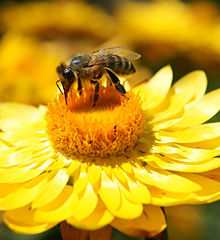 Due to its dry climate and limited vegetation, desert areas of Arizona were once a haven for individuals seeking allergen-free environments. Landscaping in the rapidly growing Phoenix metropolitan area has altered the pollen composition of this desert environment, with implications for allergy sufferers.
Due to its dry climate and limited vegetation, desert areas of Arizona were once a haven for individuals seeking allergen-free environments. Landscaping in the rapidly growing Phoenix metropolitan area has altered the pollen composition of this desert environment, with implications for allergy sufferers.
Using pollen and vegetation data from a random sample of 200 sites in the CAP LTER study area, CAP LTER scientists Glenn Stuart, Corinna Gries, and Diane Hope sought to investigate the relationship between pollen as measured from surface sediments (soil) and extant vegetation. They focused their work on four research questions:
- How does pollen abundance map against plant abundance across agricultural versus desert versus urban landscapes?
- How well defined or delineated are the pollen-plant relationships?
- Can plant taxa be grouped according to the degree of correlation between pollen and plant cover abundance?
- Can plant taxa be grouped depending on how well the presence or absence of the extant plant taxa correlate with the presence or absence of pollen across the entire study area?
- Are the findings of the relationships between extant vegetation and pollen and the distribution of pollen in line with expected results or are these relationships confounded by disturbance and manipulation of plant diversity in the agro-urban environment?
Data analysis focused on the entire suite of perennial plant taxa found across the study region with a detailed analysis of spatial and numerical patterns for select taxa including Ambrosia (bursage or ragweed), a plant native to the Sonoran Desert, and Pinus (pine), an introduced tree species. CAP scientists chose these taxa because they display a range of pollen-dispersal mechanisms as well as different distributions. They examined the pollen-plant relationships for these using maps, in addition to other analyses of variations in pollen concentration and plant cover between agricultural, desert and urban landscapes.
These analyses show some striking patterns. Ambrosia, a wind-pollinated genus, displayed the highest pollen concentrations of any genus in the study, although these are highest in the desert environment where the plant is mostly found (Fig. 1). Pinus pollen shows up in abundance in urban areas where the tree has been planted as a non-native species. Pinus pollen was also found in 94% of desert samples. Pollen from the Chenopodiaceae-Amaranthus group (a group of mostly annuals with similar pollen grains) is also present in relatively high concentrations across the three land-use types, particularly in agricultural landscapes.
The map of pollen concentration versus plant cover for Pinus (Fig. 2) shows a marked contrast with the Ambrosia map (Fig. 1), illustrating the differences in plant cover percentages. Furthermore, the spatial distribution of Pinus pollen within the urban area reflects historical patterns of growth with higher concentrations of Pinus cover in older parts of the metropolitan area.
Researchers found that 40% of the desert pollen assemblage is derived from urban, non-native plants. At the same time, they concluded that it is possible to differentiate the three landscape types based on pollen analysis. The concentration of pollen from native plant species is greatest in desert areas, while urban areas are characterized by high concentrations of pollen from non-native tree taxa. Elevated frequencies of Chenopodiaceae-Amaranthus correlate with agricultural landscapes and human disturbance.
This study has particular significance for studying modern-day pollen allergens. A major finding from this research is that there can be great variation in the spatial distribution of pollen rain across an urban area, even for taxa that produce very mobile pollen. Currently, metropolitan data for pollen counts is derived from a few sampling devises that measure the pollen load in ambient air, and these findings are then generalized to the metropolitan area. CAP research suggests that the soil-sampling method may be a more effective means of measuring spatial and long-term variations in pollen loads.
Stuart, G., C. Gries, and D. Hope. 2006. The relationship between pollen and extant vegetation across an arid urban ecosystem and surrounding desert in Southwest USA. Journal of Biogeography 33:573-591.


